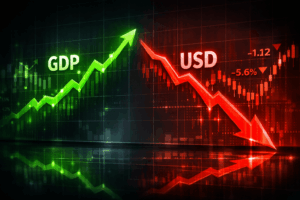Goldman Sachs analysts argue that gold acts more like Manhattan real estate than oil. The reason: gold isn’t consumed like other commodities; it’s accumulated and passed between owners. With nearly 220,000 metric tons still in existence and annual supply adding just 1%, prices are determined by buyers’ willingness to hold. Two groups dominate the market: conviction buyers (central banks, ETFs, speculators) who buy regardless of price, and opportunistic buyers (emerging market households) who step in only when prices drop. Similar to Manhattan housing, where a fixed supply means the “marginal buyer” sets the price, conviction buyers explain about 70% of monthly gold price movements. With gold already up 27% this year, Goldman sees prices climbing to $3,700 by late 2025 and $4,000 by mid-2026.

Gold at $10,000? Monetary Breadcrumbs Point to a Global Reset
Gold at $10,000 may sound extreme—but according to Mike Maloney, it’s not speculation. It’s math, history, and monetary policy converging as signs of a global reset quietly emerge.




